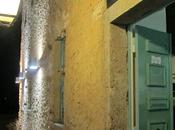
La città di Racconigi ospita una delle più belle dimore appartenute alla famiglia reale dei Savioia: il Castello di Racconigi.
L'edificio si trova nel centro cittadino, separato dalla strada principale da un'ampia e regale cancellata che delimita la corte anteriore.
Costruito tra il XII ed il XIII secolo su ordine dei Marchesi di Saluzzo, il castello venne rimaneggiato più volte trasformandolo da fortezza a residenza.
Le opere di rinnovamento più importanti vennero compiute per mano di Guarino Guarini, che ne diede un'impronta Settecentesca, e di Giovanni Battista Borra che aggiunse elementi neoclassici.
L'edificio, così come lo si può ammirare ora, si presenta come un grande palazzo a pianta rettangolare realizzato in mattoni rossi con volumetrie diverse e tetti a pagoda.
La facciata meridionale, opera del Borra, è caratterizzata da uno scalone monumentale "sorvegliato" da due sfingi ed un ingresso con pròtiro tetrastilo formato da quattro colonne corinzie che reggono un frontone triangolare dentellato.
Il castello è aperto alle visite tutto l'anno.
Il tour è accompagnato da guide e prevede la visita agli appartamenti del primo e secondo piano, nonchè alle cucine ed al parco nella bella stagione.
The city of Racconigi houses one of the finest residences belonged to the royal family of Savioia: the Castle of Racconigi .
The building is located in the city center, separated from the main road by a large and regal fence that borders the front court.
Built between the XII and XIII century on the orders of the Marquis of Saluzzo, the castle was remodeled several times transforming it from a fortress to a residence.
The most important renovations were carried out at the hands of Guarino Guarini, who gave an impression baroque, and Giovanni Battista Borra that added neoclassical elements.
The palace, as you can see now, looks like a large rectangular building made of red brick with different volumes and pagoda roofs.
The southern facade, designed by Borra, is characterized by a monumental staircase "guarded" by two sphinxes and an entrance porch with tetrastyle and four Corinthian columns that support a triangular pediment notched.
The castle, Unesco site since 1997, is open to the visitors all year round.
The tour is accompanied by guides and includes a visit to the apartments on the first and second floors, as well as the kitchen and the garden in the spring and summer.







